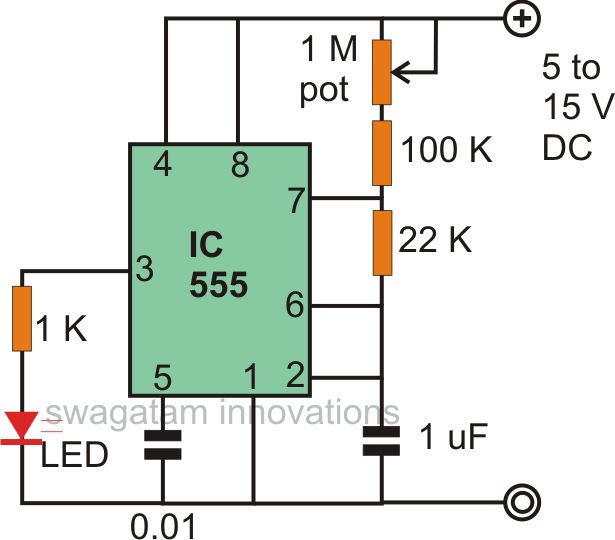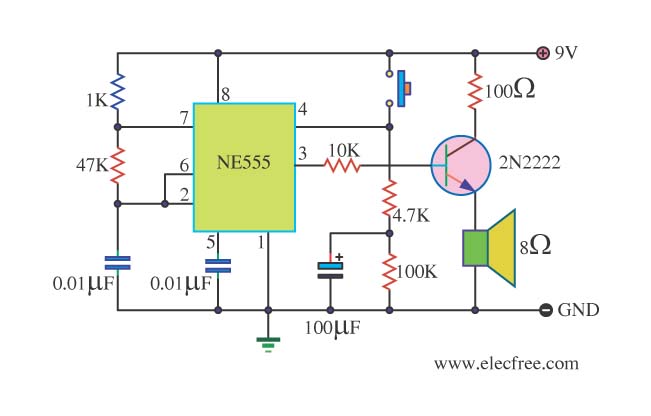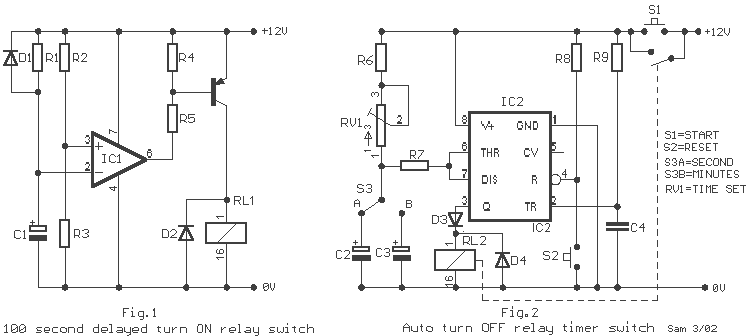
UHF TV Antenna Booster Circuit With BF180 Transistor

This is a straightforward circuit for a UHF band TV antenna booster that provides a gain of 15 dB. This low-cost antenna booster is simple and easy to construct.
The UHF band TV antenna booster circuit is designed to enhance the signal strength received by UHF antennas, which are commonly used for digital television broadcasting. The circuit typically consists of a low-noise amplifier (LNA) that amplifies weak signals captured by the antenna. The gain of 15 dB indicates that the amplifier will increase the signal strength significantly, improving the quality of the received television signals and reducing the likelihood of pixelation or loss of picture.
The primary components of this circuit include the LNA, which is usually an integrated circuit (IC) designed for RF applications, along with passive components such as resistors, capacitors, and possibly an inductor for filtering purposes. The power supply for the circuit can be derived from a standard DC source, and it is essential to ensure that the voltage and current ratings are compatible with the LNA specifications.
The circuit layout should be designed to minimize interference and maintain signal integrity. This can be achieved by keeping the input and output traces short and using proper grounding techniques. Additionally, the use of a suitable enclosure can help shield the circuit from external electromagnetic interference.
To construct the antenna booster, the components should be assembled on a printed circuit board (PCB) or a perfboard, ensuring that all connections are secure and that the layout adheres to RF design principles. Once assembled, the circuit can be tested by connecting it to a UHF antenna and measuring the output signal strength using a signal strength meter or a compatible television receiver.
Overall, this UHF band TV antenna booster circuit offers a cost-effective solution for improving TV reception in areas with weak signal coverage, making it a valuable addition to any home entertainment system.This is a very simple circuit of UHF band TV antenna booster with 15dB gain power. This low cost antenna booster is simple and easy to build. This .. 🔗 External reference
The UHF band TV antenna booster circuit is designed to enhance the signal strength received by UHF antennas, which are commonly used for digital television broadcasting. The circuit typically consists of a low-noise amplifier (LNA) that amplifies weak signals captured by the antenna. The gain of 15 dB indicates that the amplifier will increase the signal strength significantly, improving the quality of the received television signals and reducing the likelihood of pixelation or loss of picture.
The primary components of this circuit include the LNA, which is usually an integrated circuit (IC) designed for RF applications, along with passive components such as resistors, capacitors, and possibly an inductor for filtering purposes. The power supply for the circuit can be derived from a standard DC source, and it is essential to ensure that the voltage and current ratings are compatible with the LNA specifications.
The circuit layout should be designed to minimize interference and maintain signal integrity. This can be achieved by keeping the input and output traces short and using proper grounding techniques. Additionally, the use of a suitable enclosure can help shield the circuit from external electromagnetic interference.
To construct the antenna booster, the components should be assembled on a printed circuit board (PCB) or a perfboard, ensuring that all connections are secure and that the layout adheres to RF design principles. Once assembled, the circuit can be tested by connecting it to a UHF antenna and measuring the output signal strength using a signal strength meter or a compatible television receiver.
Overall, this UHF band TV antenna booster circuit offers a cost-effective solution for improving TV reception in areas with weak signal coverage, making it a valuable addition to any home entertainment system.This is a very simple circuit of UHF band TV antenna booster with 15dB gain power. This low cost antenna booster is simple and easy to build. This .. 🔗 External reference





